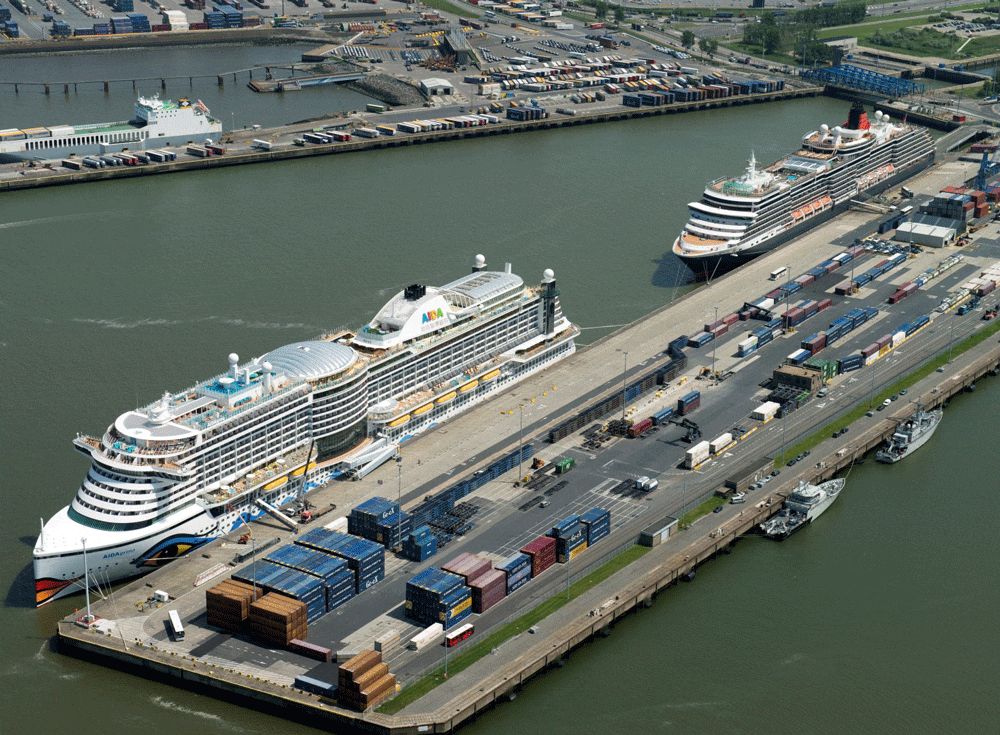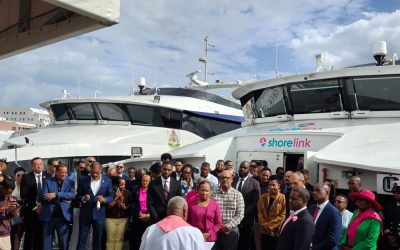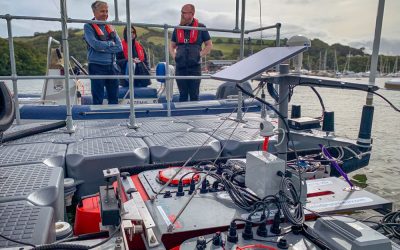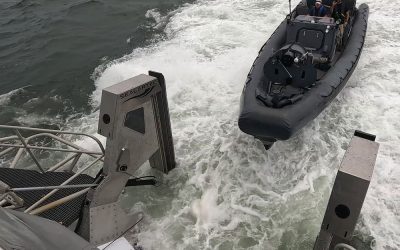The Port of Antwerp-Bruges is forging ahead to develop a shore power installation at the Zweedse Kaai cruise terminal in Zeebrugge, Belgium, which will enable this hub to provide green electricity to calling cruise ships. Scheduled to be up and running in early 2027, and funded to the tune of just under €4 million by the European Commission and the Flemish government, the addition of a new onshore power supply (OPS) and high-voltage substation at this location will slash quayside emissions to zero, while reducing smelly, unsightly smoke for the benefit of local residents, passengers and crew alike.
Upon entering the terminal, cruise vessels will be able to connect to the charger via a moveable loading arm, switch off their engines and fuel their time in port on green shoreside power. Plans for a second electric installation are now being discussed. The shore power installation forms part of a broader renovation of the Zweedse Kaai that includes a new terminal building with boarding bridges, a battery system and redevelopment of part of the quay into green space.
A statement from the Port of Antwerp-Bruges outlined: “At the moment, the Zweedse Kaai accounts for about 5% of the CO₂ emissions from all ships at the quays in Antwerp and Zeebrugge, because the cruise ships at the quay generate electricity using diesel generators. Shore power does away with those emissions locally.” The port aims to be completely climate-neutral by 2050, and port representatives hopefully added: “The project can also serve as a reference for other terminal operators.” The funding partners have forecast a payback period of approximately 20 years.
Under the Alternative Fuels Infrastructure Regulation (AFIR), certain EU ports must offer OPS to specific ships by 1 January 2030, though some have raised concerns that the pace of installations is flagging somewhat. A study conducted this year by DNV on behalf of green transport advocate T&E indicated that just four of Europe’s 30 biggest ports have installed or contracted at least half of the shoreside electricity infrastructure needed by 2030. The report also claimed that cruise ships at berth produce at least more than six times the emissions of container vessels, with some extreme gas-guzzling outliers emitting even more.




